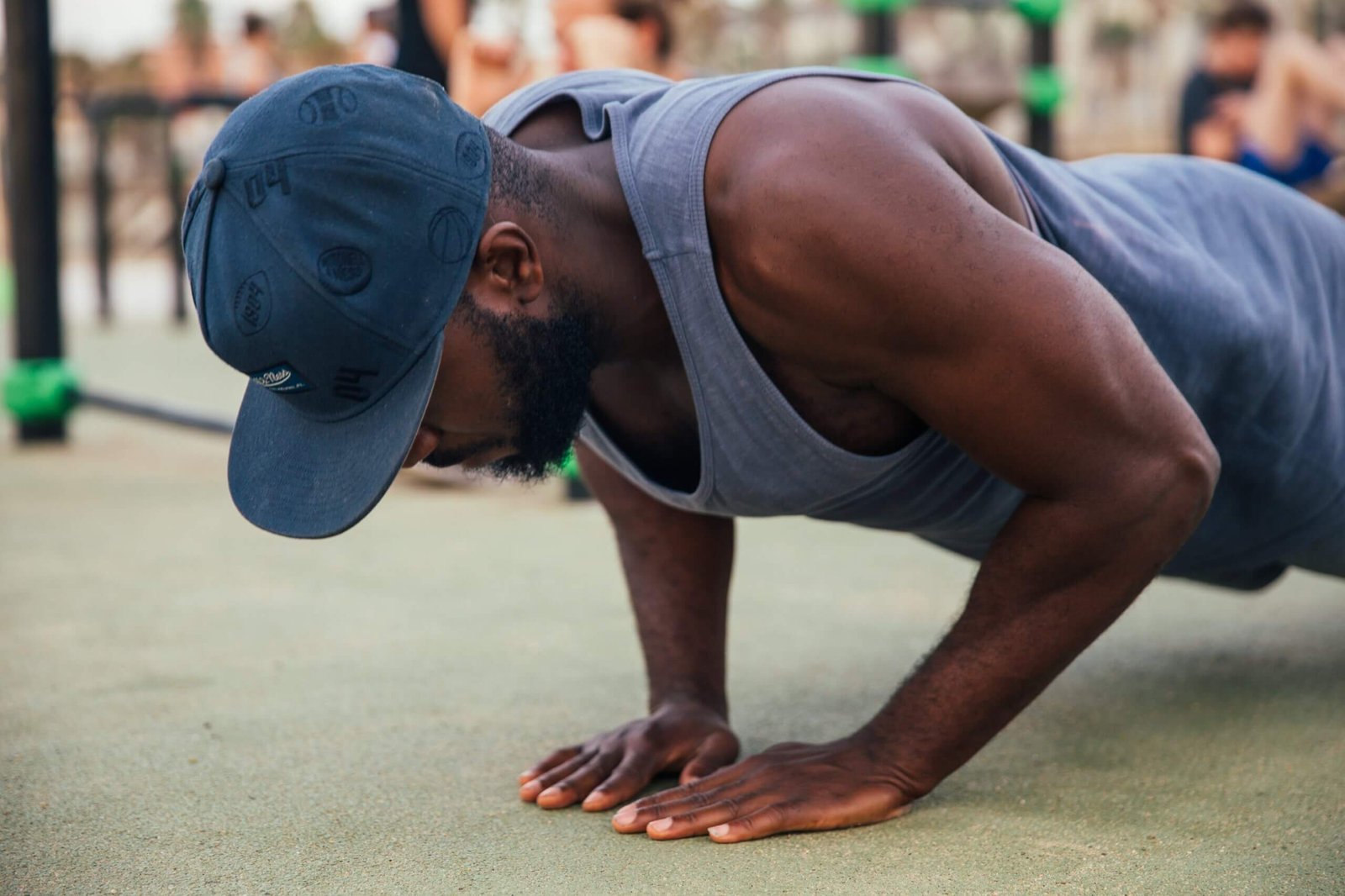
Beginning this magical pregnancy journey has been a whirlwind of emotions and surprises. From the fluttering kicks to midnight snack cravings, each day feels like an adventure. My “glow” is more of a radiant tomato, thanks to hormones that turn every moment into a rollercoaster. Maternity clothes are my new BFFs, witnessing my evolving style. Unsolicited advice givers are the unsung heroes, thinking they know the perfect pregnancy secret. Despite the ups and downs, feeling life grow within is pure magic. Here’s to stretch marks, cravings, and the emotional rollercoaster – an unforgettable chapter in my life. Cheers to the pregnancy adventure. Curious about incorporating push-ups into your fitness routine during pregnancy?
Contrary to common beliefs, push-ups can be a beneficial exercise for expectant mothers when done with proper form and caution. These dynamic movements engage various muscle groups, promoting overall strength and endurance. However, it’s crucial to prioritize safety and listen to your body. Seeking guidance from your healthcare provider prior to initiating any novel exercise routine during pregnancy is paramount. In our upcoming blog, I’ll explore the do’s and don’ts of push-ups for pregnant moms, providing valuable insights on maintaining a healthy and active lifestyle throughout this transformative journey.
Push-ups while pregnant
Are you wondering about the safety of push-ups? Good news—push-ups can be a fantastic addition to your prenatal exercise routine when performed with care. Strengthening your core, arms, and chest, push-ups contribute to overall fitness. However, it’s vital to adapt your approach as your body changes. Opt for modified versions and focus on maintaining proper form to minimize stress. Always consult with your healthcare professional to ensure your fitness routine aligns with your unique pregnancy needs. Stay tuned as we delve deeper into the benefits and modifications of push-ups for a healthy and active pregnancy.
Push-ups in First Trimesters
Beginning on the first trimester and considering your fitness routine? The good news is that push-ups can often be safely continued during this initial phase of pregnancy. However, listening to your body and making mindful adjustments is crucial. Opt for a wider stance to accommodate a growing belly, and consider elevated surfaces for added support. As with any exercise during pregnancy, consulting with your healthcare provider is key to ensuring it aligns with your circumstances. In our upcoming blog, we’ll unravel the nuances of incorporating push-ups into your first-trimester fitness regimen, providing insights to empower your journey towards a healthy and active pregnancy.”
Push-ups in Second Trimesters
As you embrace the second trimester, the question of push-ups may be on your mind. The good news is that, for many expectant mothers, well-modified push-ups can still be a safe and effective exercise during this stage. Adjusting your form to accommodate your changing body is crucial—consider incline push-ups or utilizing a stability ball for added support. Make comfort a priority and pay attention to your body’s cues. Before making fitness decisions, consulting with your healthcare provider ensures a tailored approach to your unique pregnancy journey. Stay tuned as we explore the benefits and modifications of push-ups in the second trimester, promoting a healthy and empowered prenatal fitness routine.

Push-ups in Third Trimesters
As you approach the final stretch of your pregnancy journey, the idea of push-ups may raise some questions. While adjusting your fitness routine during the third trimester is common, modified push-ups can still be a valuable addition. Opt for incline or wall push-ups to alleviate pressure on the abdomen while maintaining upper body strength. Always prioritize comfort, and consider seeking guidance from a fitness professional experienced in prenatal exercises. Of course, consulting with your healthcare provider remains paramount. In our upcoming blog, we’ll unravel the nuances of incorporating push-ups in the third trimester, offering insights to support your commitment to a healthy and mindful approach to fitness during this transformative time.”
When to Push-ups in pregnancy
Navigating when to incorporate push-ups during pregnancy? The answer lies in adapting to your body’s changing needs. Many women can continue with modified push-ups during the first trimester, focusing on proper form. As you progress to the second trimester, consider incline or stability ball variations for added support. In the third trimester, opting for gentler modifications, like wall push-ups, can maintain upper body strength without straining your body. However, individual experiences vary, so consult your healthcare provider to ensure a tailored approach aligns with your unique pregnancy journey. Stay tuned as we unravel the ‘when’ and ‘how’ of integrating push-ups into your prenatal fitness routine, promoting a safe and empowering experience for you and your baby.
Push-ups in early pregnancy
Interested in initiating your fitness routine during the early stages of pregnancy? Good news—modified push-ups can be a safe and effective way to maintain upper body strength. As you embark on this exciting journey, it’s essential to prioritize your well-being. Opt for a wider stance to accommodate changes in your body, and consider incline variations for added comfort. However, always consult your healthcare provider before introducing new exercises during pregnancy to ensure a personalized and safe fitness plan. In our upcoming blog, we’ll delve deeper into the benefits and considerations of incorporating push-ups during the early stages of pregnancy, supporting you in fostering a healthy and active lifestyle for you and your growing baby.”
Are push-ups OK postpartum?
Wondering about the postpartum return to push-ups? The good news is that, in many cases, they can be a suitable addition to your recovery fitness routine. However, it’s crucial to approach carefully and prioritize your body’s signals. Begin with modified versions, such as wall or countertop push-ups, to gradually rebuild strength. Consulting with your healthcare provider is essential, as individual recovery experiences vary. In our upcoming blog post, we’ll explore the considerations, benefits, and gentle reintroduction of push-ups postpartum, guiding you toward a safe and empowering fitness journey after childbirth.
What not to do during push-ups?
Mastering the form of your push-up involves understanding what to avoid, as it is just as crucial. Firstly, avoid arching your back, maintaining a straight line from head to heels. Steer clear of locking your elbows to prevent unnecessary strain on the joints. Please resist the temptation to let your head drop or push it forward; keep it aligned with your spine. Lastly, don’t rush. Opt for controlled movements to maximize effectiveness and minimize the risk of injury. By steering clear of these common pitfalls, you’ll ensure a safer and more efficient push-up routine.
Benefits of push-ups during pregnancy

Wondering about the advantages of adding push-ups to your prenatal workout? Modified push-ups, when done with care, offer a range of advantages during pregnancy. Strengthening the upper body, including the chest, arms, and shoulders, can enhance posture and alleviate some of the discomfort associated with changes in weight distribution. Engaging the core muscles helps provide stability, which is crucial as your body transforms. Additionally, maintaining upper body strength contributes to everyday functionality. However, it’s essential to customize your approach, considering your health and consulting with your healthcare provider. Stay tuned as we explore these benefits, empowering you to make informed choices for a healthy and active pregnancy.
Why are push-ups harder for females?
The perceived difficulty of push-ups for females often stems from anatomical and physiological differences. Women typically have a higher percentage of body fat and less muscle mass than men, making upper body strength development comparatively more challenging. Additionally, differences in center of gravity and muscle distribution can affect the biomechanics of the exercise. Social factors, including less emphasis on upper body strength training for women historically, may also contribute. Nevertheless, with consistent training, proper form, and a tailored approach, females can overcome these challenges and reap the numerous benefits of mastering the push-up exercise.
Is it good for the baby’s health?
Suppose you’re referring to push-ups during pregnancy. In that case, moderate exercise can benefit both the mother and the baby’s health. Engaging in appropriate prenatal exercises, including modified push-ups, can contribute to overall well-being by promoting strength, flexibility, and cardiovascular fitness. Nevertheless, it’s essential to seek advice from your healthcare provider before initiating or maintaining any exercise regimen during pregnancy. They can provide personalized guidance based on your specific health and pregnancy status to ensure your and your baby’s safety and well-being.
Is there any harm in doing Push-ups during pregnancy?
Push-ups are generally safe during pregnancy when done with proper form and modifications. However, it’s crucial to listen to your body, avoid overexertion, and consult your healthcare provider to ensure that the exercise aligns with your health and pregnancy conditions. Always prioritize your safety and well-being throughout your fitness routine.
Are wall Push-ups better, or do with basic Push-ups?
Choosing between the wall and basic push-ups during pregnancy depends on your fitness level and comfort. Wall push-ups are gentler, reducing strain on the abdomen and pelvic floor and making them suitable for various trimesters. Basic push-ups engage more muscle groups but may require modifications. Listen to your body, start with what feels comfortable, and consider consulting your healthcare provider for personalized advice on the most suitable option for you during pregnancy.
FAQs
Can I do push-ups during pregnancy?
Yes, you can, but modifying them and prioritizing proper form is essential. Please consult your healthcare provider to ensure it aligns with your pregnancy conditions.
Can you do push-ups while pregnant in the third trimester?
Modified push-ups like wall push-ups are generally safe in the third trimester. Listen to your body, avoid strain, and consult your healthcare provider for personalized advice.
Are push-ups bad during pregnancy?
Not necessarily. When done with care and modifications, push-ups can be a beneficial part of a prenatal fitness routine. Seek guidance from your healthcare provider as a consistent practice.
Are knee push-ups safe during pregnancy?
Yes, knee push-ups can be a safe modification during pregnancy, reducing strain on the core. Ensure proper form and consult your healthcare provider for approval.
Are wall push-ups safe during pregnancy?
Yes, wall push-ups are a safe modification, especially in the later stages of pregnancy. They help maintain upper body strength with lower impact. Seek individual advice from your healthcare provider.
Can you do push-ups while pregnant?
Yes, modified versions of push-ups are generally safe during pregnancy. Adapt your routine to accommodate your changing body, and consult your healthcare provider for personalized guidance.
Is it safe to do push-ups during pregnancy?
Yes, with proper modifications and attention to your body’s signals, push-ups can be safe during pregnancy. Always consult with your healthcare provider to ensure a suitable exercise routine.
Should pregnant women do push-ups?
Yes, pregnant women can do push-ups with modifications. It’s essential to prioritize safety and proper form and consult with a healthcare provider for personalized advice based on individual health and pregnancy factors.





2 thoughts on “Are Push-ups Terrible during Pregnancy?”